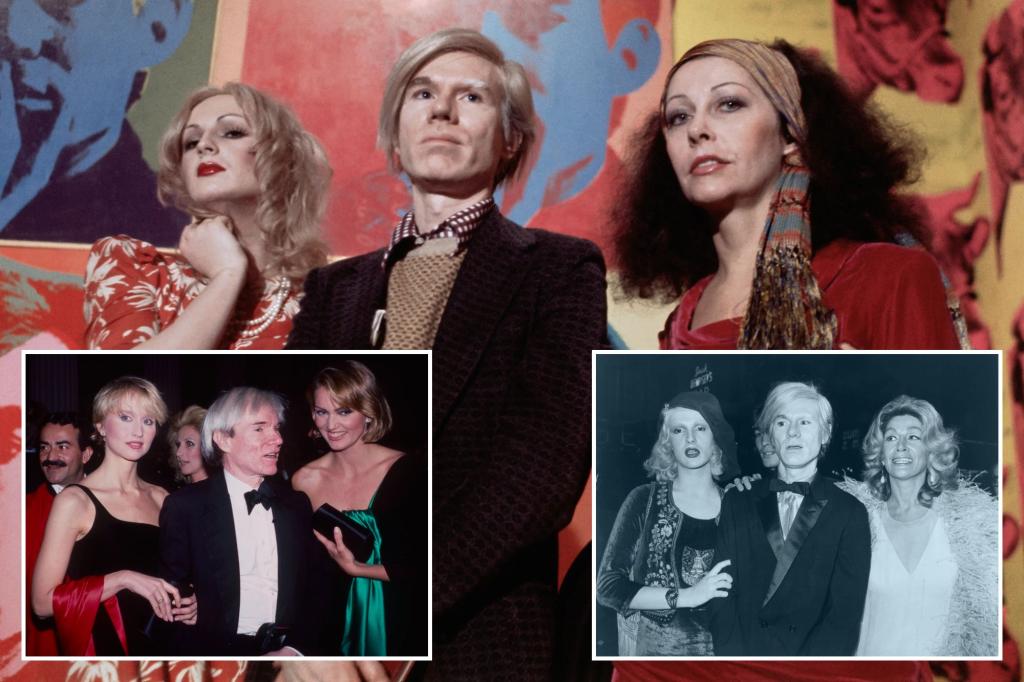Earlier this year, Anthology Film Archives in the Lower East Side hosted a screening devoted to Naomi Levine. Touted by some as Andy Warhol’s “first female superstar,” Levine performed in many of the pop artist’s early underground movies, like 1963’s “Tarzan and Jane Regained… Sort Of” and 1964’s pornographic “Couch.” Like many of Warhol’s actors, she took off her clothes for his camera.
Levine didn’t care about fame, and never became famous, which is maybe why she doesn’t even get a mention in Laurence Leamer’s new book, “Warhol’s Muses: The Artists, Misfits, and Superstars Destroyed by the Factory Fame Machine” (G.P. Putnam’s Sons, out May 6). She doesn’t fit with its thesis.
“Warhol’s Muses” is the latest entry in a long line of books and movies about the artist and his band of misfits. Like many, it portrays Warhol as a leech who used and manipulated others for the sake of his art and celebrity.
But here, Leamer focuses on Warhol’s women: the ever-evolving coterie of glamazons who accompanied him to parties, appeared in his films, and “helped turn the Pittsburgh-born son of Eastern European immigrants into international artist Andy Warhol.”
“They would raise his social cachet dramatically and bring him the publicity and public adulation he so desired,” Leamer writes.
Warhol called these women his “superstars.”
They included rebellious heiresses like Edie Sedgwick, bohemian artists like Christa Päffgen, a.k.a . Nico, and gorgeous outsiders like the trans icon Candy Darling.
They helped the shy, awkward, gay Warhol meet rich buyers and gave him a sheen of glamour. And then, per Leamer, he cast them aside when they proved no longer useful.
In 1964, Warhol was a successful commercial artist. But his “fine art” — the paintings of Campbell’s soup cans and Brillo boxes — wasn’t selling, and his movies had barely made a blip.
Then he met Jane Holzer, a 23-year-old socialite living in an Upper East Side mansion with her young real-estate mogul husband, bored out of her mind.
Holzer grew up in privilege in Palm Beach, Fla., yet had a defiant streak. When Warhol asked if she would be in one of his movies, she said: “Sure, anything’s better than [being] a Park Avenue housewife.”
She made out with two men for “Kiss.” She brushed her teeth and chewed gum for various “screen tests.”
Fully clothed, she suggestively peeled and ate a banana in “Couch,” stealing the film from the naked people around her.
In the evenings, she accompanied Warhol to party after party. By that fall, she was a bona fide celebrity, her every move documented by the press, who named her “Baby Jane.”
Her fame boosted Warhol’s own star power. His art started selling, and he was appearing on the gossip pages, too. After Holzer was deemed passé, Warhol found other “muses.”
Brigid Berlin, the “rotund and always foulmouthed” daughter of the chairman of Hearst Corporation, who went by the name Brigid Polk, entertained Warhol with anecdotes about her dysfunctional childhood.
Susan Mary Hoffman, a k a Viva, “the Lucille Ball of the underground,” injected “wicked wit and savage intelligence” into his porniest flicks. Isabelle Collin Dufresne, an erudite French girl known by the moniker Ultra Violet, had previously bedded Salvador Dalí, Warhol’s idol.
Many of these “superstars,” however, crashed and burned. Warhol’s silver studio, dubbed The Factory, attracted all manner of druggies, misfits and hangers-on.
They shot up amphetamines so they could stay up all night. They worked for little to no pay, screen-printing designs or debasing themselves as Warhol coolly captured them on film.
Ingrid von Scheven, or Ingrid Superstar — a New Jersey secretary who sometimes turned tricks for money — ended up addicted to heroin after her stint at The Factory. In 1986, at the age of 42, she went out to buy a newspaper and vanished.
Most notorious was Edie Sedgwick, the incandescent, damaged heiress who electrified 1960s New York with her silver hair, gamine beauty, and reckless extravagance. Warhol captured her haunting vulnerability on camera, filming her putting on makeup and smoking a cigarette.
Leamer doesn’t seem to think much of these movies, but they are mesmerizing and moving. She broke Warhol’s heart when she went off with Bob Dylan. (She died of a drug overdose in 1971.)
By the time the radical feminist Valerie Solanas tried to assassinate Warhol in 1968, Leamer would have us believe that the artist had it coming.
And yet, not all of Warhol’s “muses” were victims.
Nico — the German model and actress — had tried to launch a singing career for years before Warhol installed her as the frontwoman for noisy art-rockers The Velvet Underground. Her association with the band lasted only one album, but she went on to have an iconic solo career.
Mary Woronov — an art student when she fell in with the Factory crowd — kicked her drug habit and continued acting in indie films through the 1970s, ’80s, and ’90s; she’s still a painter in Los Angeles.
Ultra Violet credited both Dalí and Warhol for her subsequent art career, and exhibited work till her death in 2014.
As for Baby Jane, she survived her 15 minutes of fame. She now lives in Palm Beach, surrounded by her collection of Basquiats, Harings, and, yes, Warhols.
Read the full article here
